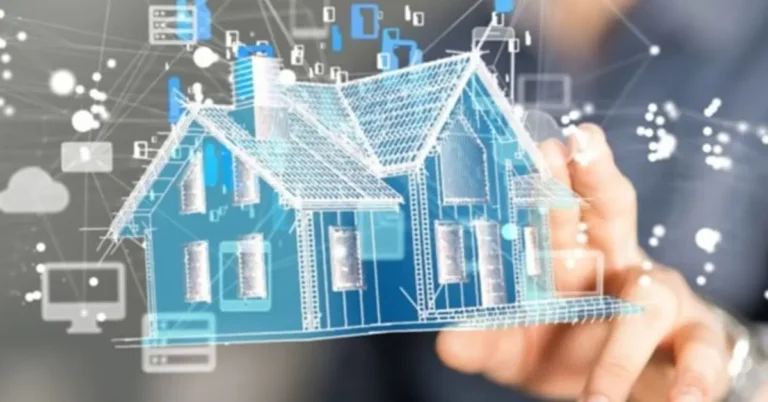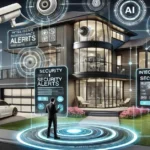Today energy conservation has become ever more important. The Smart Energy Management Systems is one such tool for optimizing energy use by homeowners; thus lowering energy costs and promoting a sustainable future. Energy management at home today would be IoT-enabled, making it easier and more efficient. Smart devices help monitor energy usage and control it, thereby comfortably reducing utility bills.
When setting up Smart Energy Management Systems, the homeowner integrates several IoT networks concerning smart thermostats, lighting systems, and even smart appliances controlled remotely or set to automate energy consumption. By monitoring energy use as it occurs, one can effectively readjust any of these functions to enhance efficiency. Over time, the system will model your habits of energy use for further improved efficiency, saving energy and money in the process.
In this guide, we will help you set up a Smart Energy Management System according to your needs. Therefore, it will talk about the basic components, key IoT devices, and their integration into a system that can be adapted to fit your home. Thus with the right mix of tools and strategy, you could create a cost-effective and eco-friendly home. Let’s get started with a transformation of the energy management system in your home.
Why Should You Set Up a Smart Energy Management System?

There may be various reasons to set up a Smart Energy Management System in your home, most of which revolve around energy efficiency and cost savings:
- Reduce Energy Consumption:
One of the main purposes for which Smart Energy Management System is set is the reduction of energy consumption. While Smart Energy Management System optimizes energy consumption in real time, one can avoid sheer power wastages that can lead to minimum utility bills. - Lower Utility Bill:
For instance, the SEMS automatically adjusts energy applications to eliminate historically wasted amounts of energy, directly reducing monthly bills. Monitoring consumption through IoT devices allows one to know more about their energy patterns and adjust practices not based merely on estimates. - Promote Sustainability:
The SEMS also resolves a major component in lessening the carbon footprint of your house. By using less energy, you contribute to the reduction of greenhouse gas emissions linked to energy generation; therefore, your house becomes more sustainable. - Increase Comfort and Convenience:
IoT appliances make it possible to monitor and control lighting, heating, and cooling in the house from a distance; convenience and comfort are certainly nowhere near compared to the traditional energy system.
Key Components of a Smart Energy Management System

To create a smart energy management system in your home, different kinds of IoT-based devices should be integrated. These devices are clearly controllable and monitored via a smartphone application or a central smart hub. Here are the key components you will require:
1. Smart Thermostats
Functioning as a major component of any IoT-based Smart Energy Management System (SEMS), a smart thermal device allows you to control the temperature of your house from anywhere, using energy in the process. An IoT thermostat learns your schedule and only changes the temperature when required, hence preventing wastage of energy while making sure that your home is comfortable.
Nest, Ecobee, and Honeywell IoT thermostats have geofences and scheduling to change temperatures automatically. Some IoT integrations also allow the thermostats to generate energy reports so you can track savings and become more efficient in your energy decisions.
2. Smart Lighting Systems
Also, smart lighting is another essential aspect of a Smart Energy Management System. IoT-enabled light bulbs can be controlled via a smartphone app or voice commands so that you can turn lights on or off from anywhere in the house while away. They can also be programmed through scheduling for times when lighting is desired.

Smart lights, coupled with occupancy sensors, conserve energy to the fullest by switching off lights when the room is not held occupied. Besides that, smart bulbs are dimmable; hence, you can set either bright or low illumination according to your needs, offering bright light when necessary and dim light when less light is called for.
3. Smart Plugs and Power Strips
Smart plugs and smart power strips allow the user to monitor and control energy consumption of any appliance connected to their outlet. You can even schedule devices to turn on and off at certain times, preventing unnecessary energy consumption by electronics that stay plugged in when not in use. The app should also allow you to track energy consumption so that you can find out which appliances are power hogs and adjust your use of them accordingly.
For instance, you could connect your entire home entertainment system or kitchen appliances to smart plugs and program them to turn off after use to prevent power consumption in the standby mode, commonly known as a phantom load.
4. Energy Monitoring Devices
Energy-monitoring devices are a collection of gadgets set in place to monitor and analyze energy usage in an entire house or for particular appliances. These devices provide a unique insight into your energy consumption patterns and help you identify probable energy cut-off areas of your choice. IoT technology allows remote monitoring of usages and alerts on high-energy consumption.
A few energy monitoring systems, such as Sense or Neurio, provide real-time data on the power consumed by specific appliances. This would help you narrow down which appliances could be potential candidates to replace or upgrade to higher energy-efficient ones.
5. Smart Appliances

Smart appliances such as refrigerators, washing machines, and dishwashers are designed to consume minimal energy. All appliances can connect and can be solved via an app on the internet. Most of these appliances have energy saving modes that suit the needs of the user whenever they are in use.
For example, a smart refrigerator deliberately varies its cooling setting depending on outside temperature or on the amount of food kept inside, while a smart washing machine chooses an optimal washing cycle that maximizes energy conservation.
6. Smart Water Heaters
A smart water heater permits the regulation of water temperature based on typical use. Some models even have vacation mode to save energy while you’re away and scheduled heating to make sure you get hot water when you need it. Connecting your water heater to a Smart Energy Management System would help curb energy wastage in heating water whenever it is not required.
How to Set Up a Smart Energy Management System for Your Home
Installing a Smart Energy Management System in one’s home is no complicated affair. Here are some initial steps to follow:
1: Assess Your Energy Needs
Before setting up your SEMS, assess your home’s energy needs. First, it is important to note which devices and appliances consume more power, namely for heating and cooling your home, water heating, and lighting. This will help out in prioritizing areas to work on when setting up your smart energy system.
2: Choose Your IoT-Based Devices

Next, choose the IoT devices that suit the needs of your home. Smart thermostats, smart lighting systems, smart plugs, energy monitors, and other smart appliances can help meet the energy needs that you feel are most pressing. Ensure that your selected devices will run on the already established home network.
3: Install and Connect Your Devices
Once the devices are selected, you should follow the manufacturer’s guidelines for installation. The setup for many IoT-based devices is simple, and some devices may provide you with applications during the whole setup. In almost all cases, a smartphone or tablet will be needed to connect the various devices to your home Wi-Fi.
4: Set Up Automation and Scheduling
After installing your devices, take full advantage of automation features. Set schedules for lighting, thermostats, and appliances that do not need to be running. For example, set the thermostat to cool down if you have gone away from home, whereas for instance the lights will automatically go off at night.
5: Monitor and Adjust Your System

Use the app or central smart hub to monitor your system’s performance. Many apps will provide energy reports, helping you track your usage over time. If you notice any areas where you can further reduce consumption, adjust your system accordingly.
6: Optimize Your Energy Usage
Continue optimizing your energy usage based on the data provided by your SEMS. The system learns over time and will adapt to suit your requirements. More IoT devices may be added as necessary for an even smarter and efficient home.
FAQs
1. What is a Smart Energy Management System?
Energy management includes optimizing energy use in the residence using smart energy management. They control your energy use, allow you to monitor it, and fully automate the consumption of energy whenever possible.
2. How do IoT devices help in managing energy consumption?
The Internet connection allows you to control and track energy usage remotely. They help automate settings to optimize energy efficiency and reduce waste.
3. What are the benefits of a Smart Energy Management System?
A Smart Energy Management System will decrease utility bills, offer greater comfort, and lower your environmental impact. The world of IoT gives you remote access to an interface that allows you to track and manage energy consumption.
4. What devices are needed to create a Smart Energy Management System?
The Smart Energy Management System setup in your house requires IoT devices such as smart thermostats, energy meters, smart light switches, and smart plugs which control and monitor energy use for your entire house.
5. Can I monitor energy use remotely with a Smart Energy Management System?
Yes, IoT technology allows you to monitor your home’s energy use remotely through an app or control hub. You can receive real-time data and adjust settings even when you’re not at home.
Conclusion
Ultimately, a Smart Energy Management System for your home becomes a highly efficient means to conserve energy, decrease costs, and lower the environmental footprint. Automation of energy management becomes possible with the inclusion of IoT devices such as smart thermostats, energy meters, and lighting controls, which contribute to home energy efficiency. Energy consumption can either be monitored or controlled by way of IoT technology, thereby giving you total discretion over energy settings to ensure maximum savings.
A Smart Energy Management System will give energy consumption-related insights that, for example, could help with tracking the energy efficiency of appliances for an immediate upgrade or replacement. Lowering of bills is just one reason behind the desire to create an environmentally sustainable living space; therefore, the installation of a Smart Energy Management System is one way to achieve it. Smart home technology is the investment that will yield returns in convenience and energy savings down the line.



